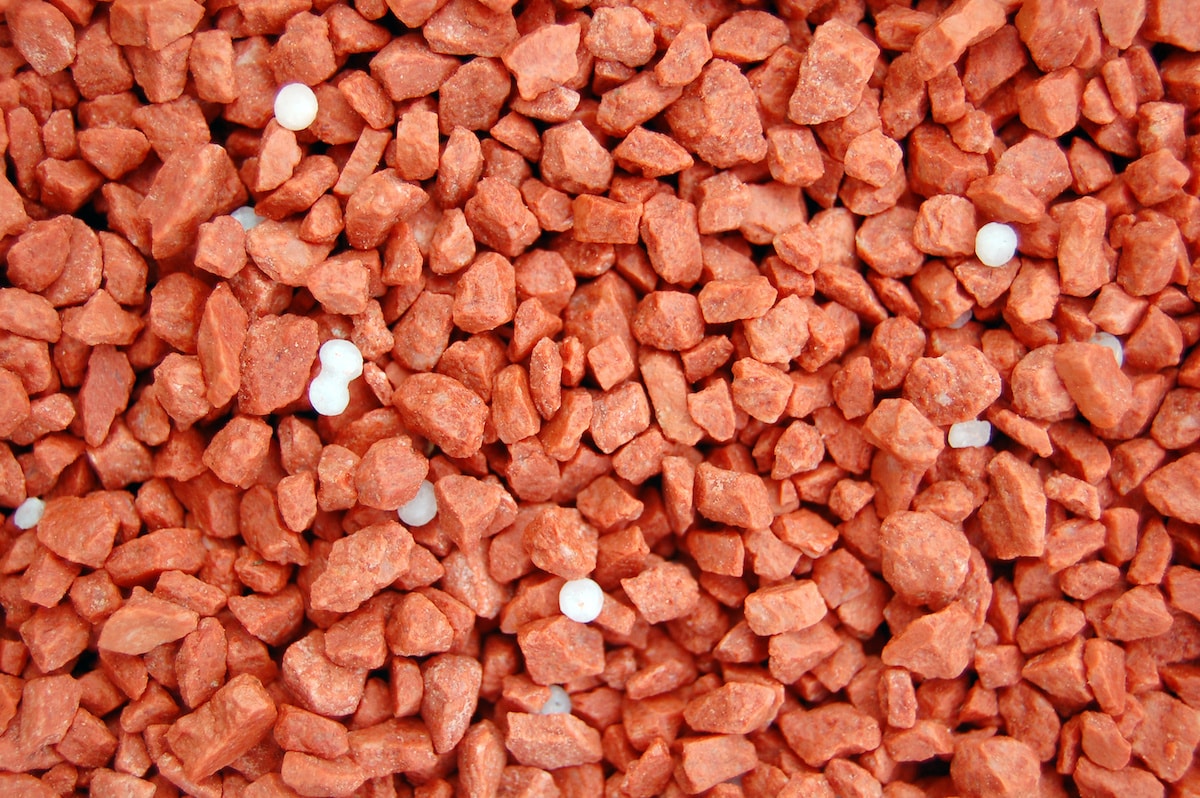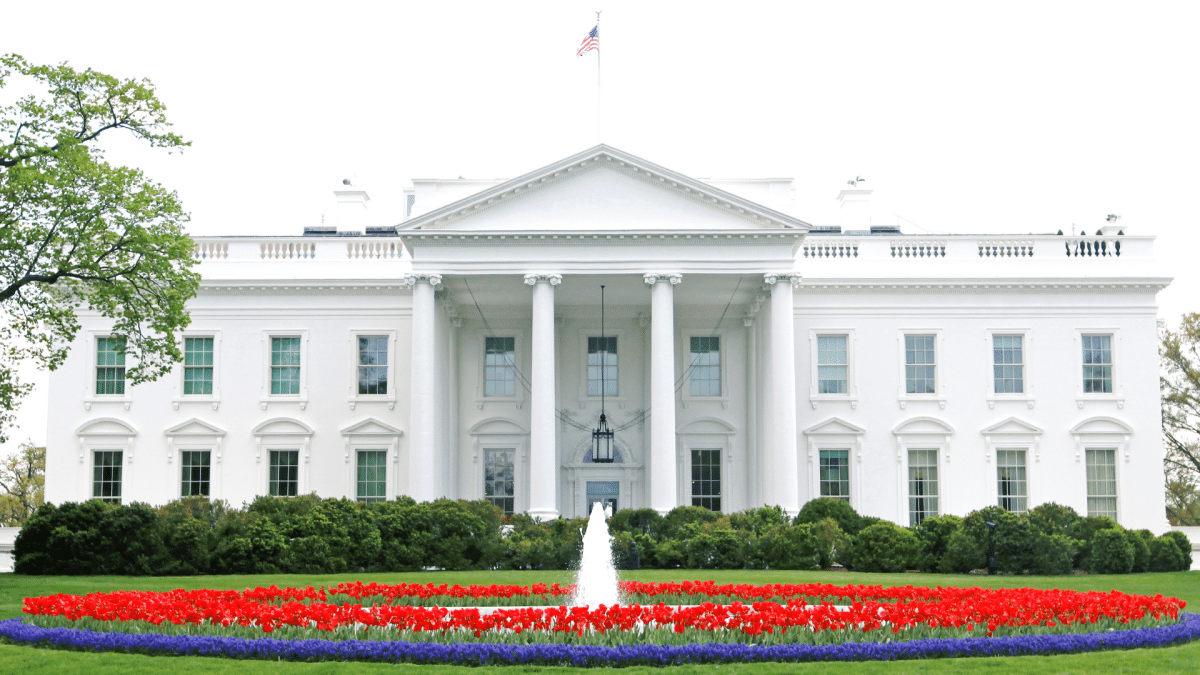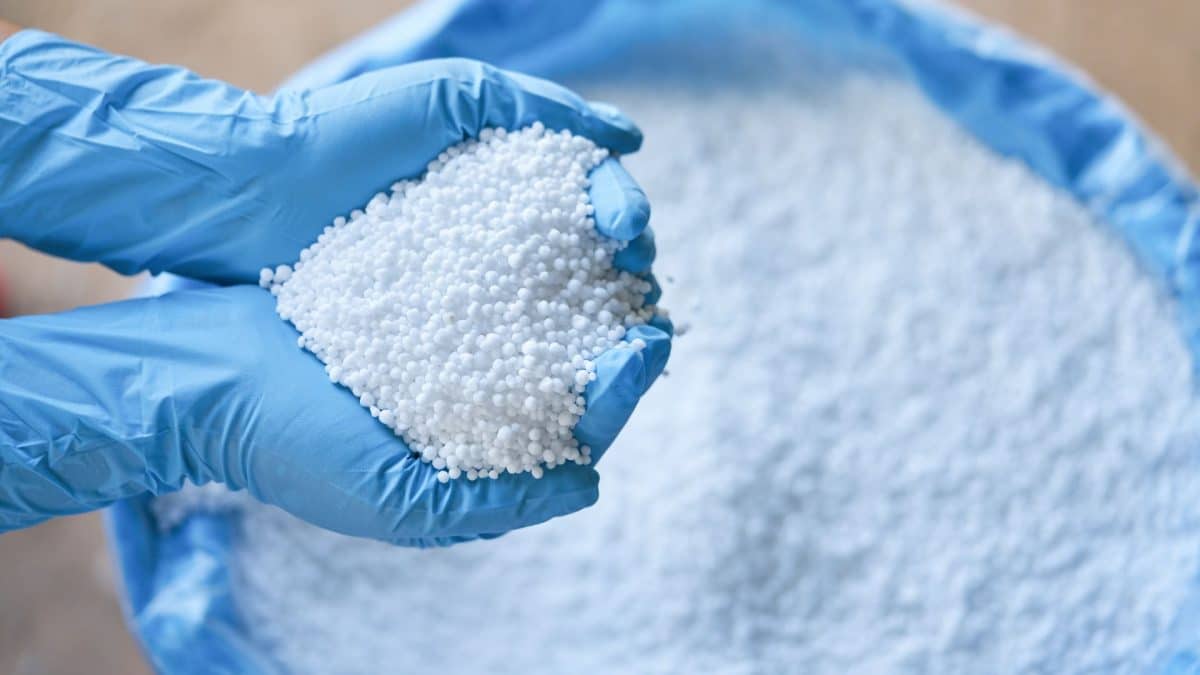Why can’t I access this file?
Possible reasons you cannot access this file:
- Your membership has expired.
- The file is restricted to certain users.
If you are seeing this message in error, please contact us.

Arlington, VA – The Fertilizer Institute (TFI) today extended its sincere thanks to President Donald Trump for including Potash alongside critical minerals in an Executive Order (EO) titled “Immediate Measures to Increase American Mineral Production.” This designation combined with the provisions in the EO sets into place a framework to ensure that Potash and our nation’s other critical mineral resources are leveraged to create jobs and fuel American prosperity.
President Trump’s EO will help ensure a stable and abundant supply of fertilizers which are critical to maintaining the global competitiveness of U.S. farmers, strengthening rural economies, and keeping food prices in check.
The Fertilizer Institute’s President and CEO Corey Rosenbusch released the following statement:
“Today’s forward-looking action by President Donald Trump to recognize potash as a critical mineral is a dramatic step towards ensuring U.S. farmers have access to the essential nutrients needed to grow the crops that feed our communities and fill our collective dinner tables with nutritious and affordable food.
“Originally included in the first list of Critical Minerals created in 2018 under President Trump’s first administration, potash’s omission from the 2022 list was a mistake that a broad coalition of industry and consumer advocates have been working to remedy.
“TFI thanks President Trump for restoring potash’s rightful place among the key minerals necessary for the success, growth, stability, and prosperity of the United States. President Trump understands that stable, affordable access to fertilizers is critical to maintaining a globally competitive U.S. agricultural sector, strengthening rural economies, and keeping food prices affordable for hard working American families.
“We look forward to continuing to work with the Trump Administration on actions that will promote a strong and resilient fertilizer industry that supports U.S. agriculture and ensures affordable food prices for American families. This includes continued engagement with the United States Geological Survey (USGS) with the goal of expanding on the EO to ensure the permanent recognition of both potash and phosphate in their rightful place on the Critical Minerals list.”
The President’s recognition of the critical nature of fertilizers will ensure that America’s farmers have access to these essential competitiveness tools. We look forward to continuing our work with the Administration to make the U.S. fertilizer industry and American agriculture the most productive in the world.
The White House has also posted a “fact sheet” on the Executive Order “Immediate Measures to Increase American Mineral Production.”
###

Arlington, VA – Following the confirmation of Brooke Rollins as U.S. Secretary of Agriculture, The Fertilizer Institute President and CEO Corey Rosenbusch released the following statement:
“TFI and the fertilizer industry congratulate Secretary Brooke Rollins on her confirmation to lead the U.S. Department of Agriculture. She has a proven track record of leadership and policy expertise that will serve the agricultural sector well as we address the challenges and opportunities ahead. Secretary Rollins’ personal connection to agriculture and her professional achievements ensure she will hit the ground running as a strong advocate for farmers, ranchers, and the agribusiness community; and her leadership, vision, and dedication to agriculture will undoubtably drive progress and innovation at the USDA.
“TFI looks forward to working with Secretary Rollins to strengthen American agriculture and meet head-on the challenges facing our industry as we continue to provide the nutrients that feed, fuel, and clothe a growing world.”
###
The Fertilizer Institute (TFI) is the leading voice of the nation’s fertilizer industry. Tracing its roots back to 1883, TFI’s membership includes fertilizer producers, wholesalers, retailers and trading firms. TFI’s full-time staff, based in Washington, D.C., serves its members through legislative, educational, technical, economic information and public communication programs. Find more information about TFI online at TFI.org and follow us on Twitter at @Fertilizer_Inst. Learn more about TFI’s nutrient stewardship initiatives at nutrientstewardship.org and on Twitter at @4rnutrients.

Arlington, VA – The Fertilizer Institute (TFI) today expressed concern following the U.S. Environmental Protection Agency’s (EPA) completion of the final risk evaluation for formaldehyde under the Toxic Substances Control Act (TSCA), saying that while EPA made several important changes the highly criticized risk evaluation still threatens U.S. agriculture and food security due to potentially limiting the essential role formaldehyde plays in the chemistry of widely used fertilizers.
“EPA’s final TSCA risk evaluation includes several important adjustments but still highlights a continued failure to meet statutory requirements regarding scientific quality, peer review, and meaningful consideration of public and interagency input,” said TFI president and CEO Corey Rosenbusch. “While TSCA requires chemical review and regulations to be based on the best available science, the EPA is finalizing this evaluation relying on a flawed assessment by the Integrated Risk Information System (IRIS) program that falls short of scientific integrity standards and lacks needed transparency. Rather than moving forward with questionable actions, the EPA should revisit the scientific foundation of its formaldehyde evaluation to avoid undermining the U.S. economy and food security.”
The Department of Agriculture, other government agencies, and EPA-selected peer reviewers have voiced concerns with the rushed timeline, scientific pitfalls, and harmful consequences of a substandard risk evaluation. Dismissing these concerns could lead to unnecessarily restrictive regulation of this essential chemistry, weakening the U.S. economy and increasing foreign dependence.
“A high-quality and scientifically rigorous risk evaluation is of great importance to U.S. fertilizer manufacturers and farmers,” said Rosenbusch, noting that formaldehyde chemistry is essential for the production of granulated urea, which accounts for over 25% of the nitrogen consumed domestically. “Formaldehyde chemistry is also needed to manufacture slow-release urea products that maximize nutrient use efficiency and minimize environmental losses.”
Notwithstanding minor improvements, EPA’s final risk evaluation concludes nearly all conditions of use, including fertilizer manufacturing and commercial use of fertilizer products (i.e. grower handling and application of urea), contribute to ‘unreasonable risk’ under TSCA, meaning formaldehyde production and downstream applications in fertilizer manufacturing and use could face difficult-to-meet restrictions.
“Not only is EPA’s suggested starting point for workplace limits inconsistent with the best available science, it disregards the existing measures that protect workers, such as the use of personal protection equipment. These workplace limits are significantly lower and out of line with recently updated standards from international regulators,” Rosenbusch concluded. “We will continue working to inform EPA on how formaldehyde is essential for U.S. agriculture and sharing the substantial scientific evidence supporting the safe use of formaldehyde.”
###
The Fertilizer Institute (TFI) is the leading voice of the nation’s fertilizer industry. Tracing its roots back to 1883, TFI’s membership includes fertilizer producers, wholesalers, retailers and trading firms. TFI’s full-time staff, based in Washington, D.C., serves its members through legislative, educational, technical, economic information and public communication programs. Find more information about TFI online at TFI.org and follow us on Twitter at @Fertilizer_Inst. Learn more about TFI’s nutrient stewardship initiatives at nutrientstewardship.org and on Twitter at @4rnutrients.

Arlington, VA – The Fertilizer Institute (TFI) applauds Congress for passing the Water Resources Development Act (WRDA) of 2024, a key piece of legislation related to our nation’s water infrastructure, and for updating the cost-share structure to bring more general revenue dollars towards inland waterway projects.
“Our nation’s transportation infrastructure is critical to agriculture and rural America’s competitive advantage in world markets, and WRDA provides vital support for that network,” said TFI President and CEO Corey Rosenbusch. “WRDA is the foundation for the modernization of our nation’s inland waterways and ports, which are an integral component of the fertilizer distribution system.”
Of particular importance, this year’s WRDA reauthorization updates the cost-share structure for inland waterway lock and dam construction projects so that 75% of funding will now come from the general fund with the remaining 25% coming from the Inland Waterways Trust Fund. The previous 65% – 35% split artificially limited the funding Congress could provide to these projects each year, and with the change an additional $1.4 billion in funding could be available over a ten-year period.
“Increasing the general fund portion of the cost-share structure will promote much needed investment for inland navigation projects, as well as provide confidence to industry that much needed maintenance and modernization of our inland waterway system will happen,” Rosenbusch explained. “On a ton-mile basis, approximately one-fourth of fertilizer moves on the inland barge system and these projects are absolutely critical to the safe and efficient distribution of fertilizers.”
Rosenbusch noted that addressing the maintenance backlog, estimated at billions of dollars, is an investment in our nation’s future, saying that well-maintained waterways enable the fertilizer industry to transport goods quickly and reliably, ensuring farmers receive supplies on time.
“Delays caused by outdated components of the system are not only disastrous for the farmers who receive much of the almost 70 million tons of fertilizer each year via our nation’s waterways, they can also raise the prices of everyday goods and food for consumers,” Rosenbusch concluded. “The fertilizer industry appreciates the bipartisan work of Congressional leaders that have made modernization of our inland waterways a priority.”
###
The Fertilizer Institute (TFI) is the leading voice of the nation’s fertilizer industry. Tracing its roots back to 1883, TFI’s membership includes fertilizer producers, wholesalers, retailers and trading firms. TFI’s full-time staff, based in Washington, D.C., serves its members through legislative, educational, technical, economic information and public communication programs. Find more information about TFI online at TFI.org and follow us on Twitter at @Fertilizer_Inst. Learn more about TFI’s nutrient stewardship initiatives at nutrientstewardship.org and on Twitter at @4rnutrients.

ARLINGTON, VA – Today, December 16, 2024, the Agricultural Retailers Association (ARA), the Council of Producers and Distributors of Agrotechnology (CPDA), CropLife America (CLA), and The Fertilizer Institute (TFI) released the following joint statement:
“As Congressional leaders deliberate on a year-end stopgap government funding bill, it is critical that any package includes disaster assistance and economic aid for farmers. Farmers are facing severe financial hardships, and they need robust support from this legislation to help ensure the viability of their livelihoods, our rural communities, and our food supply. We urge House and Senate leadership to reach a spending package deal that includes disaster assistance and economic aid for farmers.”

Arlington, VA – The Fertilizer Institute (TFI) today applauded president-elect Trump’s nomination of Brooke Rollins to serve as Secretary of Agriculture, calling her nomination a “strong choice to lead the USDA.”
“TFI and the fertilizer industry congratulate Brooke Rollins on her nomination to lead the Department of Agriculture,” said TFI president and CEO Corey Rosenbusch. “She has strong agricultural ties and will be a powerful voice to lead on issues critical to the agricultural industry.”
In describing Rollins as a strong choice, Rosenbusch pointed to the nominee’s professional accomplishments, including work on the WOTUS rule, improving American food security, and her support for measures that defend US agricultural trade interests.
“Nominee Rollins has shown adeptness in not just effectively navigating difficult policies, but also ensuring that those policies have positive impacts on the American people,” Rosenbusch said. “Her experience serving in various policy roles in the first Trump Administration, including director of domestic policy; leading the Texas Public Policy Foundation for 15 years; and establishing both the America First Policy Institute and America First Works, has shown that she knows how to get things done.”
In addition to her proven policy track record, nominee Rollins has the agricultural roots to hit the ground running with a firm understanding of the challenges and opportunities that currently exist in the agricultural sector.
“I’ve known Brooke for 40 years and saw firsthand her passion for agriculture through our time together in the Glen Rose, Texas chapter of FFA where she was elected First Vice President for the Texas state chapter,” Rosenbusch continued. “She then went on to receive her agricultural development degree from Texas A&M where she was also the first female student body president elected in the school’s history.
“She definitely has the ag bona fides,” Rosenbusch concluded. “And the demonstrated leadership qualities that will enable her to succeed. Brooke Rollins’ nomination is a strong choice to lead the USDA and TFI looks forward to working with her upon her confirmation.”
###
The Fertilizer Institute (TFI) is the leading voice of the nation’s fertilizer industry. Tracing its roots back to 1883, TFI’s membership includes fertilizer producers, wholesalers, retailers and trading firms. TFI’s full-time staff, based in Washington, D.C., serves its members through legislative, educational, technical, economic information and public communication programs. Find more information about TFI online at TFI.org and follow us on Twitter at @Fertilizer_Inst. Learn more about TFI’s nutrient stewardship initiatives at nutrientstewardship.org and on Twitter at @4rnutrients.

Possible reasons you cannot access this file:
If you are seeing this message in error, please contact us.

We’re diving into a topic that might not always grab the headlines but is crucial for a steady food supply: the Water Resources Development Act (WRDA). This legislation, along with our inland waterways, plays a key role in supporting the fertilizer industry and agriculture.
What is WRDA?
The Water Resources Development Act (WRDA) is pivotal U.S. legislation that authorizes and prioritizes water resource projects, including dams, levees, ports, and inland waterways. WRDA ensures that the US Army Corps of Engineers has the appropriate direction for maintaining and improving our waterway infrastructure, preventing disruptions, and supporting the agricultural industry by facilitating efficient transportation of goods like fertilizers.
Why Inland Waterways Matter
Inland waterways are the hidden highways of our transportation network, essential for moving goods smoothly across the country. For the fertilizer industry, these waterways are vital. Fertilizers are bulky and heavy, making water transport efficient and cost-effective. Regular Congressional action on WRDA bills keeps this infrastructure in top shape, ensuring fertilizers and other essentials reach farmers efficiently.
Investing in water infrastructure through WRDA isn’t just about maintaining old systems—it’s about making them more efficient and reliable. This often includes the construction of whole new lock facilities to meet modern requirements. This means smoother transport, lower costs for producers and consumers, and a stronger, more resilient economy.
The Case for Investing in Waterway Infrastructure
Many locks and dams in the U.S. are over 90 years old, some dating back to the 1930s. This aging infrastructure urgently needs maintenance and upgrades to prevent significant delays and disruptions. Portions of the inland waterway network in poor condition act as bottlenecks due to the need for unscheduled maintenance, with each day of delay depriving crops of essential nutrients, resulting in lower yields and higher costs, which can lead to higher prices for consumers. Many of our oldest locks are only half the size needed for modern tug and barge traffic.
Investing in waterway infrastructure is crucial for efficiency, safety, and economic stability. Upgrading our lock and dam systems ensures smoother, more reliable transportation, reduces costs, and enhances economic stability. WRDA plays a critical role by prioritizing essential maintenance and upgrades, transforming old systems into efficient networks.
Key WRDA Legislative Support and Benefits
TFI supports the enactment of a final WRDA bill before the end of 2024. Thankfully, both the Senate and House have passed their versions of the legislation. TFI is especially supportive of a provision advanced by the Senate which would propose changing the cost-share for waterway projects from the current 65% general revenues/35% Inland Waterways Trust Fund (IWTF) split to 75% general revenues/25% IWTF. Bringing more general revenue dollars towards inland waterway projects accelerates funding for critical construction and rehab projects, saving taxpayers money and speeding up project completion.
Addressing the maintenance backlog, estimated at billions of dollars, is an investment in our future. Well-maintained waterways enable the fertilizer industry to transport goods quickly and reliably, ensuring farmers receive supplies on time. This leads to better crop yields and stable food prices.
Positive Consequences of WRDA Reauthorization
Recent progress in advancing the WRDA bills has been remarkable, with strong bipartisan support in both the Senate and the House. The Senate’s bill even received unanimous approval, showcasing a unified commitment to enhancing our water infrastructure. This legislative progress promises a brighter future for our waterways and the agricultural sector.
With the right policies in place, WRDA reauthorization ensures:
Let’s Wrap It Up
WRDA and our inland waterways are critical components of the fertilizer industry’s supply chain. Investing in this infrastructure ensures that farmers get the supplies they need, crops grow efficiently, and food prices remain stable. So, next time you enjoy a fresh salad or a hearty bowl of pasta, take a moment to appreciate the complex system that helps get that food from the farm to your table. It’s all connected, and it all starts with smart investments in our waterway infrastructure. By supporting these efforts, we can keep our food system strong, our economy stable, and our communities thriving.

Formaldehyde may not immediately spring to mind when considering agriculture, yet it plays a critical role, particularly in the production of fertilizers. Often linked with the preservation of biological specimens, formaldehyde’s agricultural importance cannot be overstated. As a naturally occurring organic compound, formaldehyde is vital for producing granular urea and slow-release urea fertilizers. However, the EPA’s newly proposed, overly conservative risk determinations on formaldehyde could drastically alter its use in agriculture, potentially leading to higher food costs and impacting crop yields.
Understanding Formaldehyde’s Agricultural Impact
Formaldehyde is crucial in producing urea and slow-release urea fertilizers. Nearly 25% of all nitrogen consumed domestically is urea. Slow-release urea fertilizers come in both solid and liquid forms and are designed to release nutrients slowly. This slow-release process reduces nitrogen runoff—limiting environmental impacts—and ensures that crops receive a steady supply of nutrients. As a result, plants are healthier and have higher yields. This method makes formaldehyde indispensable in modern agriculture, as it enhances the efficiency of plants using nitrogen and supports sustainable farming efforts.
Why Farmers Rely on Urea-Formaldehyde
The Challenge of New EPA Formaldehyde Regulations
The Environmental Protection Agency (EPA) has released its draft risk determinations for formaldehyde and a draft occupational exposure value. Industry experts have criticized these proposed limits, arguing that the restrictions are too severe, don’t align with global standards, and are not justified by the best available science. In fact, the EPA’s proposed limits are even lower than the levels of formaldehyde found in half of homes in the US. Finalization of unobtainable exposure values could disrupt the production of essential agricultural products without improving safety. This situation highlights the need for realistic regulations that balance wellness with the practical needs of agriculture.
If finalized as proposed, the EPA’s unreasonable risk determination of formaldehyde use will create a tricky situation. The subsequent risk management rule will aim to eliminate unreasonable risks by imposing unachievable workplace protections or prohibited uses that completely bring challenges for agriculture, farmers, and consumers.
Challenges from stricter regulations could impact the lives of all Americans. Potential issues include:
Formaldehyde may not be a familiar substance outside scientific and agricultural circles, but it’s essential for producing fertilizers that sustain our food supply. Although the industry is committed to working with agencies to promote the safety of the agriculture value chain, EPA’s proposed exposure limit is excessively strict and not based on the best available science. The challenge lies in balancing public health concerns with agricultural production needs. A more balanced approach to regulation would safeguard public health without disrupting the economic stability of farmers or impacting crop yields and food prices. By aligning these new regulations with practical agricultural practices and international standards, we can protect public health and support the foundation of America’s food system.

Arlington, VA – The Fertilizer Institute (TFI) president and CEO Corey Rosenbusch today provided testimony in support of phosphate and potash, two of the three macronutrients essential to agricultural productivity, to the House Subcommittee on Energy and Mineral Resources. The hearing focused on several bills related to critical minerals including the bipartisan H.R. 8450, the Phosphate and Potash Protection Act of 2024, introduced by Representatives Cammack and Slotkin. If enacted, the legislation would direct the United States Geological Survey (USGS) to conduct an immediate review to determine the need for adding phosphate and potash to the Critical Minerals list.
“Half of all global crop yields can be attributed to fertilizer, but as the world population continues to grow it is imperative that the sustainable production and use of fertilizers continues to provide the ability of growing more food without needing more land on which to grow it,” Rosenbusch testified. “But the majority of phosphate and potash resources are concentrated in only a few countries, leaving them vulnerable to supply chain vulnerabilities and geopolitical instability. The events of the past few years have shown us that food security is national security and now is the time to protect our nation by including phosphate and potash on the USGS Critical Minerals list.”
Only 14 countries in the world produce potash, with Belarus and Russia comprising nearly 40% of global production. While the U.S. produces potash domestically, it imports roughly 95% of its needs. Regarding phosphate, 11 countries produce significant amounts with China accounting for over 40% of global production.
“Without these two minerals, modern agricultural systems would crumble and the ability to feed our growing population would be nearly impossible,” continued Rosenbusch. “It is vital that we take proactive steps to secure our own agricultural future by recognizing the role these minerals play in putting food on our tables.”
The USGS defines a critical mineral as essential to the economic or national security of the United States, susceptible to supply chain disruptions, and having significant consequences for the economy or national security if absent. “We are here today to ensure this committee understands that phosphate and potash meet all three of those criteria and should, without a doubt, be included on the USGS list of critical minerals,” Rosenbusch concluded.
###
The Fertilizer Institute (TFI) is the leading voice of the nation’s fertilizer industry. Tracing its roots back to 1883, TFI’s membership includes fertilizer producers, wholesalers, retailers and trading firms. TFI’s full-time staff, based in Washington, D.C., serves its members through legislative, educational, technical, economic information and public communication programs. Find more information about TFI online at TFI.org and follow us on Twitter at @Fertilizer_Inst. Learn more about TFI’s nutrient stewardship initiatives at nutrientstewardship.org and on Twitter at @4rnutrients.